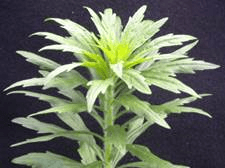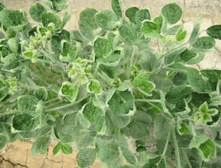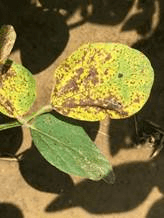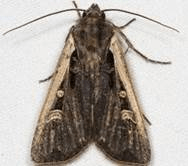Good afternoon,
Wheat harvest is now complete and the focus has shifted to the progress of the growing season for corn and soybeans. Manure is being applied around the county to area wheat stubble fields. If you have livestock or are involved with manure application in Ohio, you won’t want to miss the upcoming Manure Science Review being held at the Watkins Farm near Forest on July 25. Register by Monday at www.go.osu.edu/msr2018 to get the best ticket price for this field day being held in Hardin County. I have also attached the most recent version of the flyer for this event. Double crop soybeans have been planted as well following the cutting of the wheat. The most recent Ohio Crop Weather report for July 9 indicates that 44% of soybeans are blooming and 30% of corn is silking in the state. Check out this attached report from USDA for more information about our crop progress to this point in time.
Next week on Tuesday, July 17 there is going to be the 4R Technology Review Field Day sponsored by the Ohio Agribusiness Association. This event will also have a full slate of speakers in the morning and field demonstrations after lunch focusing on nutrient management. It is being held at the Kellogg Farm near Forest so you will want to go to http://www.oaba.net/ to register for this event. Read the attached news release for more details about this event also being held in Hardin County. If you raise fruits and vegetables, you may be interested in going to this year’s Hardin County Crop Walk, which is actually taking place in Marion County, just over the county line near LaRue on Wednesday, July 18. See the attached news release and flyer for more information about this program which will focus on insects, disease, and weed control in produce. The OSU Extension Master Gardener Volunteers are having a Fairy Gardens workshop Saturday, July 21 starting at 9:00 am at the Friendship Gardens of Hardin County (see attached flyer).
4R Technology Review Field Day News Release
Friendship Gardens Workshop Flyer
Other events that you won’t want to miss are the Western OARDC Agronomy Field Day on Wednesday, July 18 in Clark County. See the article below for more information about this event and other ag crops topics. Another field day that is coming up August 8 in Auglaize County is the Manure Management and Cover Crops Field Day being held near Wapakoneta. I have attached a flyer for this event so you can register to attend before July 25. Another opportunity to learn about hops production is a July 19 Backyard Hops program that has been announced in Madison County at the Farm Science Review site. See the attached flyer for more information and how to register by July 18. Another interesting read for you is ‘The Impact of the Agricultural and Food Production Cluster to Hardin County’ report that I shared this past Friday at the Ag Council breakfast. Check it out to find out how important Hardin County Agriculture is to the local economy. These numbers compiled by The Ohio State University Department of Agricultural, Environmental, and Development Economics are based on net income, not gross income as you may have seen on other reports.
Manure Management and Cover Crops Field Day Flyer
The Impact of the Agricultural and Food Production Cluster to Hardin County
Other local events this coming week include Farm Bureau meeting Tuesday (7/17) starting at 6:30 pm at the Kenton Christian Missionary Alliance Church. There is a Soil and Water Conservation District meeting Thursday (7/19) starting at 7:30 am at the SWCD office. The OSU Extension Master Gardener Volunteers are meeting Monday (7/23) starting at 7:00 pm at Harco Industries.
Mark
Foliar Fungicide Use in Corn – Pierce Paul
Foliar diseases, especially Gray Leaf Spot (GLS), are beginning to show up in some corn fields. This is not at all surprising, given that the crop was planted relatively late and it has been wet and humid in some areas. GLS is favored by humid conditions, particularly if temperatures are between 70 and 90 F. Foliar diseases of corn are generally a concern when they develop early and progress up the plant before grain fill is complete. This is especially true when the hybrid is susceptible. In most years, GLS and NCLB usually develop late or remain restricted to the lower leaves. However, if it continues to rain and stays humid, this will likely not be the case this year. Go to https://agcrops.osu.edu/newsletter/corn-newsletter/2018-20/foliar-fungicide-use-corn to finish reading about foliar fungicide use in corn.
Only Susceptible Varieties are Prone to Diseases and May Require a Fungicide Application– Anne Dorrance
From the scouting reports from the county educators and crop consultants – most of the soybeans in the state are very healthy with no disease symptoms. However, as the news reports have indicated, there are a few varieties in a few locations that have higher incidence of frogeye leaf spot than we are accustomed to seeing at this growth stage – mid R2 – flowering in Ohio. Most of the reports to date are along and south of route 70, which based on the past 12 years is where frogeye is the most common. When this disease occurs this early in the season, where it can be readily observed, this is a big problem and should be addressed right away with a fungicide soon and a second application at 14-21 days later depending on if disease continues to develop and if environmental conditions (cool nights, fogs, heavy dews, rains) continue. Go to https://agcrops.osu.edu/newsletter/corn-newsletter/2018-21/only-susceptible-varieties-are-prone-diseases-and-may-require to finish reading this article.
Controlling Marestail in Double-Crop Soybeans – Mark Loux
A uniform wheat crop can provide effective suppression of marestail, especially when combined with some in-crop herbicides. It is nonetheless typical for marestail plants to be evident after the wheat is harvested, and these should be controlled prior to double crop soybean emergence. There can be a couple types of marestail plants to deal with in this situation: 1) small ones that were lurking near the base of the wheat plants, which are largely not disturbed by the combine; and 2) larger ones that may have been present in areas of thin wheat stand, which get cut off by the combine and then regrow. To read more, go to https://agcrops.osu.edu/newsletter/corn-newsletter/2018-21/controlling-marestail-double-crop-soybeans.
Mark Your Calendars for These Important Field Days – Harold D. Watters
The Western ARS Agronomy Field Day will be held July 18th from 9 AM to 3 PM. No charge this year as we are soliciting sponsors to offset that cost. Lunch is included, and we will of course have in-season updates as well as talk about some on-going research. The location is the Western Agricultural Research Station at 7721 So. Charleston Pike, South Charleston south of I-70 and just west of the Ohio 54 and SR 41 intersection or from the west exit from I-71 onto SR 41, south, drive about 4 miles and you will see the station on the right. To see the agenda and registration for this field day at the Western OARDC research station, go to https://agcrops.osu.edu/newsletter/corn-newsletter/2018-20/mark-your-calendars-these-important-field-days.
Western Bean Cutworm Montoring – Amy Raudenbush, John Schoenhals, CCA, Mark Badertscher, Lee Beers, CCA, Amanda Bennett, Bruce Clevenger, CCA, Sam Custer, Tom Dehass, Mike Gastier, CCA, Jason Hartschuh, CCA, Ed Lentz, CCA, Rory Lewandowski, CCA, Cecilia Lokai-Minnich, David Marrison, Sarah Noggle, Les Ober, CCA, Eric Richer, CCA, Garth Ruff, Jeff Stachler, Alan Sundermeier, CCA, Chris Zoller, Andy Michel, Kelley Tilmon
Monitoring for WBC adults continues across Ohio with trap counts slowly increasing for July 1 through 7. Last week, 21 counties monitored 61 traps (Figure 1). Overall across all locations, there was an average of 3.4 moths per trap (217 captured). This is an increase from an average of 1.2 moths/trap the previous week. The general trend of WBC trap catches appears to be similar to 2016 where peak flight was the third week in July; however, average trap numbers are currently lower than 2016 (Figure 2). Western bean cutworm adults can peak during any week in July depending on the year. Click on https://agcrops.osu.edu/newsletter/corn-newsletter/2018-21/western-bean-cutworm-montoring for additional information.
Mark A. Badertscher
Agriculture and Natural Resources Educator
OSU Extension Hardin County
1021 W. Lima Street, Suite 103, Kenton, OH 43326
419-674-2297 Office
hardin.osu.edu










